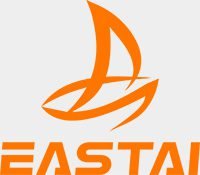Comprehensive Guide to Aerial Work Platforms
Aerial work platforms (AWPs), also known as aerial lifts or elevating work platforms, are essential tools in industries where height access is critical. These machines are designed to provide temporary access to elevated work areas for tasks such as maintenance, construction, cleaning, and more. The efficiency and functionality of AWPs largely depend on hydraulic systems, particularly the hydraulic cylinders, which are responsible for lifting, positioning, and ensuring smooth operations.
In this article, we will delve into the various types of aerial work platforms, explore their key components, and highlight the critical role that hydraulic cylinders play in ensuring their safe and efficient operation.
Types of Aerial Work Platforms
Aerial work platforms come in various designs, each suited to specific tasks and environments. Below are the most common types:
Scissor Lifts: Known for their vertical lift motion, scissor lifts provide a stable platform for workers. They are ideal for indoor tasks like electrical installations or warehouse work.
Boom Lifts: These lifts offer both vertical and horizontal reach, making them perfect for jobs requiring flexible movement, such as construction, window cleaning, and tree trimming. Boom lifts come in several subtypes, including:
Telescopic Boom Lifts: Provide straight reach and are suitable for long-distance tasks.
Articulating Boom Lifts: These offer multi-directional reach, allowing access to hard-to-reach areas.
Vertical Mast Lifts: Compact and highly maneuverable, vertical mast lifts are used primarily for indoor applications in tight spaces, such as maintenance work in retail or warehouse environments.
Truck-Mounted Lifts: These are mounted on trucks, providing mobility and versatility, ideal for jobs that require quick setup and relocation, like streetlight maintenance and utility repairs.
Components of Aerial Work Platforms
Aerial work platforms comprise several essential components that work together to ensure smooth and efficient operation. Among these, the hydraulic system stands out as the backbone of the machine’s lifting capabilities.
Hydraulic System
The hydraulic system provides the force required to lift the platform. It consists of hydraulic pumps, hoses, valves, and, most importantly, hydraulic cylinders.
Control Panel
The operator uses the control panel to maneuver the platform. It typically includes controls for elevation, tilt, and sometimes lateral movement, depending on the type of AWP.
Safety Mechanisms
AWPs are equipped with various safety features, such as emergency stop buttons, load limit sensors, and stabilizing outriggers, ensuring a safe working environment for operators.
Chassis and Platform
The chassis provides a stable base, while the platform is the work area where operators stand and perform tasks.
The Role of Hydraulic Cylinders in Aerial Work Platforms
Hydraulic cylinders are the heart of the lifting mechanism in aerial work platforms. Their primary function is to convert the hydraulic energy supplied by the pump into mechanical force, enabling the platform to rise, lower, and position itself accurately.
Hydraulic Cylinders in Boom Lifts
Boom lifts, whether telescopic or articulating, rely on hydraulic cylinders to extend and retract the boom arm. In telescopic boom lifts, the hydraulic cylinder allows the straight extension and contraction of the boom, offering access to heights and distances. In articulating boom lifts, multiple hydraulic cylinders are used to bend and articulate the boom at various angles, enabling access to hard-to-reach areas. The flexibility and accuracy of these movements directly depend on the precision and power of the hydraulic cylinders.
Hydraulic Cylinders in Scissor Lifts
Scissor lifts use a series of linked, folding supports in a crisscross “X” pattern to achieve vertical lift. The platform is raised by hydraulic cylinders that push the arms of the scissor mechanism apart, lifting the platform. The strength of the hydraulic cylinder determines the maximum height and load capacity of the lift. A smooth, controlled ascent and descent are essential for both operator safety and equipment longevity, making hydraulic cylinder performance critical.
Hydraulic Cylinders in Truck-Mounted Lifts
In truck-mounted lifts, hydraulic cylinders are used not only for lifting the platform but also for stabilizing the vehicle. Outriggers, which are extendable legs that stabilize the lift during operation, rely on hydraulic cylinders to deploy and retract them quickly. This ensures that the lift remains steady even on uneven terrain, allowing for safe operation at height.
Advantages of Hydraulic Cylinders in Aerial Work Platforms
Hydraulic cylinders offer several advantages that make them ideal for use in aerial work platforms:
High Power Density
Hydraulic cylinders are known for their ability to generate large amounts of force from relatively small units. This high power-to-size ratio is crucial in AWPs, where space is limited, but heavy loads need to be lifted.
Smooth and Precise Movement
The hydraulic system allows for smooth control of movement, which is essential for precise positioning when working at heights. This is particularly important in tasks that require fine adjustments, such as electrical work or window cleaning.
Durability and Reliability
Hydraulic cylinders are built to withstand heavy use and harsh environments. Their robust construction ensures that they can handle the demanding conditions often encountered in construction sites or outdoor maintenance tasks. Regular maintenance, including checking seals and fluid levels, can extend the lifespan of hydraulic cylinders, ensuring the reliability of the AWP.
Safety and Load Holding
One of the key safety features of hydraulic cylinders is their ability to hold loads securely, even in the event of a power failure. The use of hydraulic locks and check valves prevents the platform from descending unexpectedly, ensuring operator safety at all times.
Maintenance of Hydraulic Cylinders in Aerial Work Platforms
Maintaining the hydraulic cylinders in aerial work platforms is critical to ensuring long-term performance and safety. Neglecting regular maintenance can lead to hydraulic fluid leaks, cylinder failure, or compromised lifting capacity.
Inspection and Cleaning
Regular visual inspections of hydraulic cylinders are necessary to check for signs of wear, corrosion, or leakage. Cleaning the cylinders and removing any dirt or debris can prevent contamination of the hydraulic fluid, which can cause damage to the internal components.
Seal Replacement
Hydraulic cylinders use seals to keep the fluid contained and maintain pressure. Over time, these seals can wear out or become damaged. Replacing seals promptly is essential to prevent leaks and ensure the hydraulic system operates efficiently.
Hydraulic Fluid Maintenance
The quality and level of hydraulic fluid play a significant role in the performance of the cylinders. Regularly checking fluid levels and replacing old or contaminated fluid helps prevent overheating and ensures smooth operation.
Cylinder Rod Protection
The cylinder rod is exposed to the environment, making it vulnerable to scratches, dents, or corrosion. Protective coatings and proper handling can prevent damage to the rod, which can otherwise lead to internal leaks or cylinder failure.
Future Trends in Aerial Work Platforms and Hydraulic Systems
The aerial work platform industry continues to evolve, with advancements in technology driving new innovations. Hydraulic systems, including cylinders, are expected to see improvements in several key areas:
Electro-Hydraulic Systems
Many manufacturers are exploring the integration of electronic controls with hydraulic systems. Electro-hydraulic systems provide more precise control and automation, improving the efficiency and safety of AWPs. In the future, we may see aerial work platforms with fully automated hydraulic systems, offering improved ease of use and performance.
Environmentally Friendly Hydraulic Fluids
As sustainability becomes a growing concern, there is a push toward using environmentally friendly hydraulic fluids. These fluids reduce the environmental impact in case of leaks and improve the overall efficiency of the hydraulic system.
Advanced Materials for Hydraulic Cylinders
Manufacturers are developing hydraulic cylinders made from advanced materials that are lighter yet stronger than traditional steel. These materials reduce the overall weight of the AWP, improving fuel efficiency and ease of transportation, while still maintaining high load capacities.
Hydraulic cylinders are the backbone of aerial work platforms, providing the force and control necessary for lifting, positioning, and ensuring the safety of operators at height. From boom lifts to scissor lifts, hydraulic cylinders play a vital role in the performance and reliability of these machines. By understanding their function, maintaining them properly, and staying informed on industry trends, businesses can ensure the safe and efficient operation of aerial work platforms for years to come.
In the ever-evolving world of aerial work platforms, hydraulic cylinders will continue to be a cornerstone of innovation, ensuring that these essential tools remain powerful, precise, and reliable.


